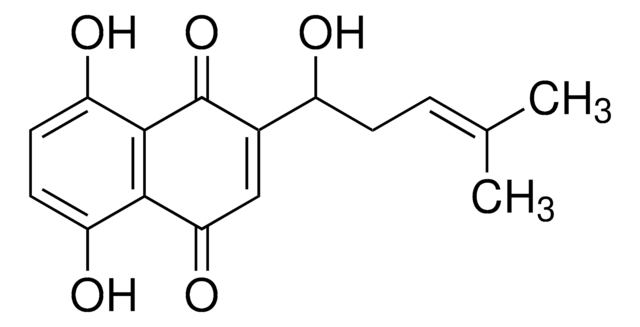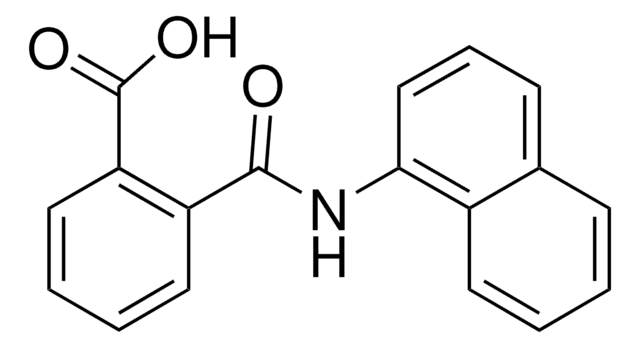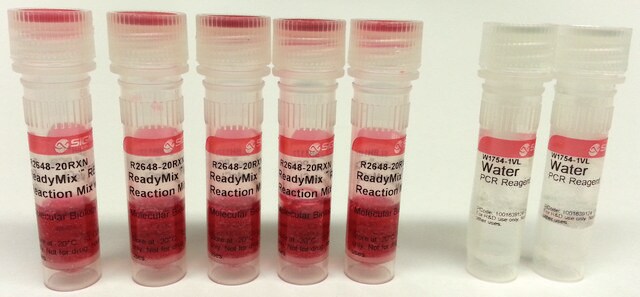P8861
Pyrrolnitrin from Pseudomonas cepacia
≥98% (HPLC), solid
Synonym(s):
3-Chloro-4-(3-chloro-2-nitrophenyl)pyrrole
Sign Into View Organizational & Contract Pricing
All Photos(1)
About This Item
CAS Number:
EC Number:
MDL number:
UNSPSC Code:
12352200
PubChem Substance ID:
NACRES:
NA.77
Recommended Products
Quality Level
Assay
≥98% (HPLC)
form
solid
antibiotic activity spectrum
fungi
Mode of action
enzyme | inhibits
shipped in
wet ice
storage temp.
−20°C
SMILES string
[O-][N+](=O)c1c(Cl)cccc1-c2c[nH]cc2Cl
InChI
1S/C10H6Cl2N2O2/c11-8-3-1-2-6(10(8)14(15)16)7-4-13-5-9(7)12/h1-5,13H
InChI key
QJBZDBLBQWFTPZ-UHFFFAOYSA-N
Specificity
The purified antibiotic has strong antifungal activity and is less efficient against bacteria or yeast.
Application
Pyrrolnitrin from Pseudomonas cepacia has been used as a standard in the detection of pyrrolnitrin in Serratia marcescens cell culture extract.
Biochem/physiol Actions
Pyrrolnitrin blocks the terminal electron transport between succinate or reduced NADH and coenzyme Q. In mitochondria preparations of S. cerevisiae, the antibiotic inhibited succinate oxidase, NADH oxidase, succinate cythochrome C reductase, and NADH-cytochrome C reductase. Pyrrolnitrin is involved in many cellular processes such as oxidative stress, electron transport, DNA and RNA synthesis.
Pyrrolnitrin is a metabolite, produced by Pseudomonas sp.
Signal Word
Warning
Hazard Statements
Precautionary Statements
Hazard Classifications
Eye Irrit. 2 - Skin Irrit. 2 - STOT SE 3
Target Organs
Respiratory system
Storage Class Code
11 - Combustible Solids
WGK
WGK 2
Flash Point(F)
Not applicable
Flash Point(C)
Not applicable
Personal Protective Equipment
dust mask type N95 (US), Eyeshields, Gloves
Choose from one of the most recent versions:
Already Own This Product?
Find documentation for the products that you have recently purchased in the Document Library.
El-Banna, N., and Winkelmann, G.
Applied Microbiology, 85, 69-69 (1998)
Suppression of damping-off of cucumber caused by Pythium ultimum with live cells and extracts of Serratia marcescens N4-5
Roberts DP, et al.
Soil Biology and Biochemistry, 39(9), 2275-2288 (2007)
Chernin, L., et al.
Current Microbiology, 32, 208-208 (1996)
Magdalena M Rose et al.
Environmental microbiology, 23(9), 5525-5540 (2021-08-05)
The unicellular alga Chlamydomonas reinhardtii and the bacterium Pseudomonas protegens serve as a model to study the interactions between photosynthetic and heterotrophic microorganisms. P. protegens secretes the cyclic lipopeptide orfamide A that interferes with cytosolic Ca2+ homeostasis in C. reinhardtii
Natural Antimicrobials for the Minimal Processing of Foods, 201-201 (2003)
Our team of scientists has experience in all areas of research including Life Science, Material Science, Chemical Synthesis, Chromatography, Analytical and many others.
Contact Technical Service







